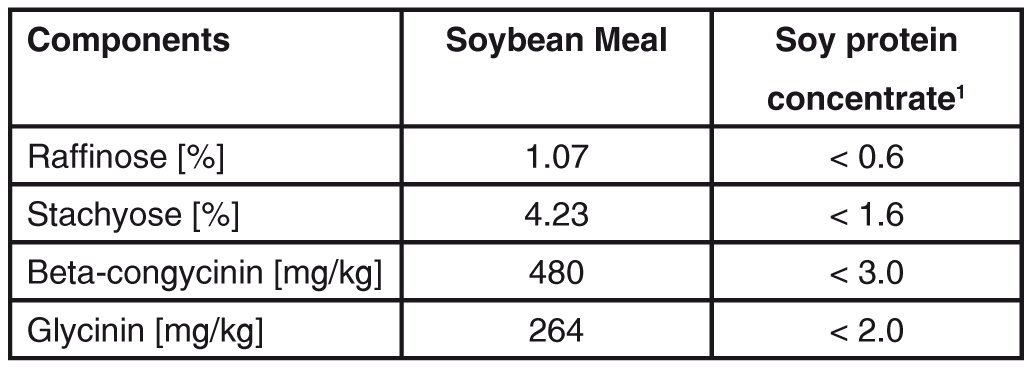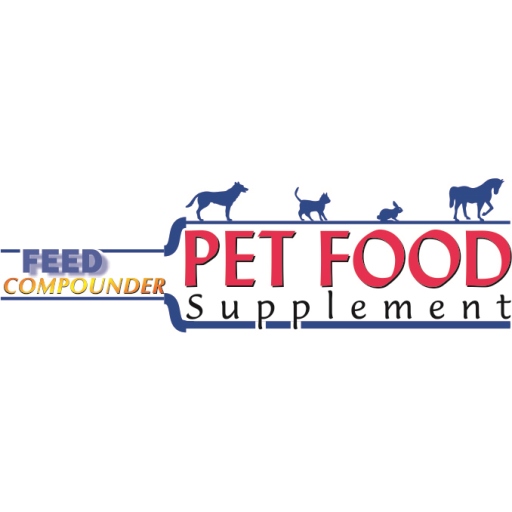Alternative protein sources:
Soy protein concentrate in dog food
By Dr. Diana Siebert, Technical Center, CJ Europe GmbH.
Introduction
Even though soybean meal and other soy products are commonly used in feed production, soy, in part, still has a negative image in pet food. However, soy is about to experience a renaissance in the pet food industry, which is possibly related to a new generation of pet owners without prejudices, an improvement in quality of soy products, and an enhanced knowledge about soy products as ingredients for companion animals. Although, in Europe, soybean is still a minor component for pet food, in the US approximately 3 % of their soybean production is used for pet food (Hill, 2004).
A variety of soy-based products are available on the market. Soybean meal (SBM) is a by-product of the soy oil industry with a high CP level. Soy protein concentrate (SPC) is produced to further increase the protein content of SBM, as well as to reduce remaining anti-nutritional factors. Therefore, SPC is an ingredient with high amino acid digestibility in dogs. Moreover, SPC has proven good extrusion functionality.
What is the difference between Soybean meal and Soy protein concentrate?
SBM is produced from the residue left after oil extraction from soybean. In general, SBM is already a safe ingredient, which is mainly used as a protein source in animal feed. SBM is attractive for the pet food industry as a vegetable protein source because its amino acid profile is relatively close to the profile of meat (see Table 1).
Soybean contains trypsin-inhibitors which can interfere with the protein digestion. To denature the trypsin-inhibitors, soybean meal must be heat-treated during the production process. However, high processing temperatures and duration of heat treatment can drastically reduce the amino acid digestibility of the final product. Furthermore, soybean contains non-starch polysaccharides (e.g. stachyose and raffinose) which cannot be removed by heat-treatment, which are known as anti-nutritional factors.
Consequently, there has been intensive research into improving the digestibility of soy through processing. After the oil extraction, the remaining SBM will be treated with ethanol instead of heat (toasting) to flush out anti-nutritional factors. In the case of CJ Selecta SPC, the product also gets micronized to produce the optimal particle size. This processing is suitable for all origins of soy, so the final product can be GMO SPC or a NON-GMO SPC. With the ethanol extraction method, it is possible to remove most of the carbohydrate fraction (including stachyose and raffinose) and to enhance the nutritional value (see Table 2).
Table 1: Amino acid composition of selected ingredients [% as fed basis]

Functionality in extrusion process
Venturini et al. (2018) evaluated the processing traits of increasing amounts of SPC against a diet based on poultry by-product meal. Regarding the extrusion parameters, extruder motor amperage and the temperature of extrusion was lower for the diet based on poultry by-products rather than the diets based on SPC. The inclusion of vegetable protein also leads to changes in the kibble formation and to a favourable higher starch gelatinization. This fits very well with former descriptions about functional soy protein acting as a cohesive network to increase stability of the kibbles (Riaz and Rokey, 2012). This is especially important when the fat content of the formulation is low because of the inclusion of vegetable protein instead of meat by-products with a high fat content. The results demonstrated that SPC has a good extrusion functionality in comparison to a diet based on poultry by-product meal.
Table 2: Comparison of average analytical values of soybean meal and soy protein concentrate (CJ Selecta X-Soy)

Palatability and digestibility of SPC
In a trial with 37 trained dogs, the palatability of diets with high inclusion rates of SPC (18.7 % of the diet) was compared with pet food based on corn gluten meal and poultry by-product meal using the two-bowl-method (Venturini et al., 2018). Dog´s preferred diets containing poultry by-product to diets containing corn gluten meal. However, there was no statistical difference for first choice and ingested quantities between diets containing SPC or diets based on poultry by-product meal (Venturini et al., 2018). Thus, pet food containing SPC can have a palatability like a diet based on animal protein.
The same working group also evaluated the digestibility in vivo. The Coefficients of total tract apparent digestibility for dry matter, fat, crude protein, and crude energy did not differ statistically between the diets based on poultry by-product meal, corn gluten meal, and SPC as main ingredients. Only organic matter showed slightly higher digestibility coefficients for corn gluten meal compared with SPC (Venturini et al., 2018). In an earlier study (Clapper et al., 2001), SPC had even a higher crude protein digestibility compared with poultry by-product meal. Thus, digestibility of a diet based on SPC is comparable to a diet based on classic pet food ingredients like corn gluten meal and poultry by-product meal.
Conclusion
SPC is an ingredient which is characterized through a low nutrient fluctuation and a stable supply. Even high SPC inclusion rates have no negative impact on the palatability of final food. Digestibility coefficients of diets based on SPC were comparable with diets based on poultry by-product meal as a protein source. Through its good extrusion functionality with beneficial impact on kibble formation, SPC is a useful vegetable protein supplement for the pet food industry.
References
Venturini, K. S., Sarcinelli, M. F., Baller, M. A., Putarov, T. C., Malheiros, E. B., & Carciofi, A. C. (2018). Processing traits and digestibility of extruded dog foods with soy protein concentrate. Journal of animal physiology and animal nutrition, 102(4), 1077-1087.
Riaz, M. N., and G. J. Rokey. 2012. Extrusion problems solved: Food, ped food and feed. UK: Woodhead Publishing. https://doi.org/10.1533/9780857095206.
Hill, D. 2004. Alternative proteins in companion animal nutrition. In Pet Food Association of Canada Fall Conference.
National Research Council. 2006. Nutrient requirements of dogs and cats. Washington, DC: The National Academies Press.
Clapper, G. M., Grieshop, C. M., Merchen, N. R., Russett, J. C., Brent Jr, J. L., and G. C. Fahey Jr. 2001. Ileal and total tract nutrient digestibilities and fecal characteristics of dogs as affected by soybean protein inclusion in dry, extruded diets. Journal of animal science, 79(6), 1523-1532.
Other Topics
Contact
Phone
01994 240002
Address
Plas y Coed, Velfrey Road, Whitland SA34 0RA

